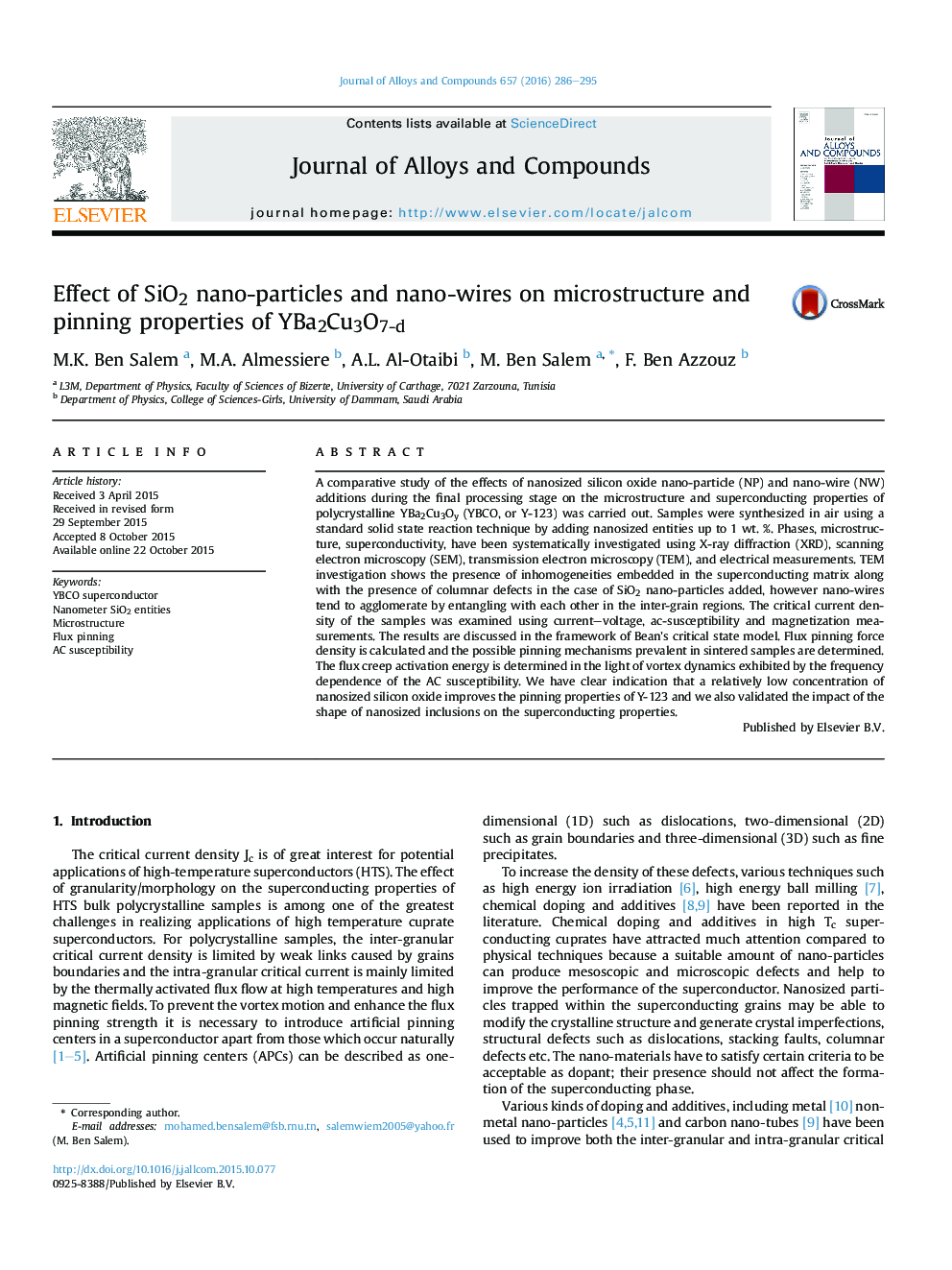| Article ID | Journal | Published Year | Pages | File Type |
|---|---|---|---|---|
| 1607323 | Journal of Alloys and Compounds | 2016 | 10 Pages |
Abstract
A comparative study of the effects of nanosized silicon oxide nano-particle (NP) and nano-wire (NW) additions during the final processing stage on the microstructure and superconducting properties of polycrystalline YBa2Cu3Oy (YBCO, or Y-123) was carried out. Samples were synthesized in air using a standard solid state reaction technique by adding nanosized entities up to 1Â wt. %. Phases, microstructure, superconductivity, have been systematically investigated using X-ray diffraction (XRD), scanning electron microscopy (SEM), transmission electron microscopy (TEM), and electrical measurements. TEM investigation shows the presence of inhomogeneities embedded in the superconducting matrix along with the presence of columnar defects in the case of SiO2 nano-particles added, however nano-wires tend to agglomerate by entangling with each other in the inter-grain regions. The critical current density of the samples was examined using current-voltage, ac-susceptibility and magnetization measurements. The results are discussed in the framework of Bean's critical state model. Flux pinning force density is calculated and the possible pinning mechanisms prevalent in sintered samples are determined. The flux creep activation energy is determined in the light of vortex dynamics exhibited by the frequency dependence of the AC susceptibility. We have clear indication that a relatively low concentration of nanosized silicon oxide improves the pinning properties of Y-123 and we also validated the impact of the shape of nanosized inclusions on the superconducting properties.
Related Topics
Physical Sciences and Engineering
Materials Science
Metals and Alloys
Authors
M.K. Ben Salem, M.A. Almessiere, A.L. Al-Otaibi, M. Ben Salem, F. Ben Azzouz,
